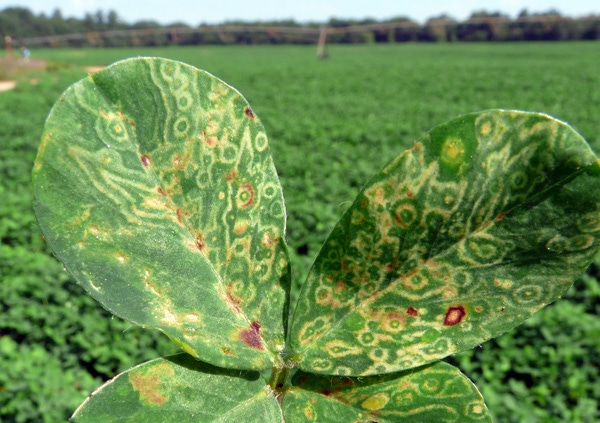September 17, 2015

Peanut growers hoped tomato spotted wilt virus was a thing of the past. New, improved varieties with TSWV resistance along with other better management tools finally put the disease “to bed.” But tomato spotted wilt virus will not stay down.
Once a disease that threatened the peanut industry in the Southeast, tomato spotted wilt had been on the decline since 2005 and was nearly nonexistent in peanut fields between 2009 and 2012.
As it turns out, though, keeping tomato spotted wilt suppressed now was once like trying to keep my son, Jimmy, in his bed through the night. Before he could walk, Jimmy would awake from a nap, scale his crib and crash to the floor. Later, it was easy to get Jimmy into his bed, where he would doze peacefully. But at some point in the night, our sleep would be interrupted by the sounds of little feet “thump, thump, thumping” across our wooden floors. No matter how hard we tried, Jimmy would not stay in bed.
Beginning in 1990, losses to tomato spotted wilt rose steeply to peak in 1997, before sharply declining, only to peak again in 2002 and then more sharply in 2006. The rapid decline after 1997 coincided with the adoption of what was then known as the UGA Tomato Spotted Wilt Risk Index, and the widespread planting of the moderately-resistant variety Georgia Green. The steep decline and eventual near-absence of tomato spotted wilt after 2006 coincided with the widespread planting of the more-resistant variety Georgia-06G.
By 2009, tomato spotted wilt rarely caused significant yield losses except in occasional fields where the problems were often linked to planting date, plant stand or some other production practice. During these “quiet” years, my comments to growers about spotted wilt were limited to, “We may not see much of it this year, but remain vigilant. Thrips and the tomato spotted wilt virus are still here with us.”
Disease's advancement puzzling
Beginning in 2013, we saw a gradual and troubling increase in losses attributed to tomato spotted wilt, and this continues to the present season. For many growers, the increase has been difficult to notice. But for those of us who have closely watched the severity of spotted wilt plummet from industry-threatening levels in 1997 to nearly-gone in 2011, the recent advance of the disease has been puzzling.
Not in every field, but certainly across the Southeast, the severity of spotted wilt has been on the rise. There have been low-risk fields (as determined using Peanut Rx, the evolution of the UGA Tomato Spotted Wilt Risk Index), where as many as 40 percent of the plants were affected. In other fields, disease severity was a high as 60 percent, or levels of disease reminiscent of the mid-1990s. Fortunately, such fields are rare, and the overall losses are not nearly what they were during the early days of the disease. Still, a three-year increase in estimated overall losses to spotted wilt is cause for concern.
Reasons for this increase are unclear. It is unlikely that the virus is overcoming the resistance in Georgia-06G, though this question has been raised by growers. There is speculation that pressure from viruliferous thrips (those carrying the virus) has been more intense in recent years, or that current production practices like planting date and thrips management may put a peanut crop at greater risk.
It is still very important to aggressively protect peanut against tomato spotted wilt. Growers are encouraged to use the newest version of Peanut Rx, which will be released soon into 2016. Though Georgia-06G remains the most popular variety among growers, they are urged to consider planting newer varieties with even better resistance to spotted wilt. Growers are encouraged to report significant outbreaks of tomato spotted wilt to county agents so that such can be studied and documented.
I’m happy to report Jimmy now sleeps soundly through the night. Hopefully, we can one day curb spotted wilt losses in peanut and put it finally to bed. Until that day, growers should remain vigilant. Tomato spotted wilt is still “thump, thump, thumping” out there.
You May Also Like




